2,5-DIMETHYL-1-PHENYLPYRROLE-3-CARBOXALDEHYDE
- CAS NO.:83-18-1
- Empirical Formula: C13H13NO
- Molecular Weight: 199.25
- MDL number: MFCD00051494
- EINECS: 201-458-6
- SAFETY DATA SHEET (SDS)
- Update Date: 2024-12-18 14:08:57
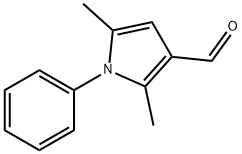
What is 2,5-DIMETHYL-1-PHENYLPYRROLE-3-CARBOXALDEHYDE?
The Uses of 2,5-DIMETHYL-1-PHENYLPYRROLE-3-CARBOXALDEHYDE
2,5-Dimethyl-1-phenyl-1H-pyrrole-3-carbaldehyde is a reagent that is used in the discovery of pyrrolone antimalarials.
Properties of 2,5-DIMETHYL-1-PHENYLPYRROLE-3-CARBOXALDEHYDE
| Melting point: | 89-90°C |
| Boiling point: | 190 °C(Press: 12 Torr) |
| Density | 1.04 |
| storage temp. | under inert gas (nitrogen or Argon) at 2-8°C |
| pka | -5.56±0.70(Predicted) |
| Sensitive | Air Sensitive |
| BRN | 144790 |
| CAS DataBase Reference | 83-18-1(CAS DataBase Reference) |
| EPA Substance Registry System | 1H-Pyrrole-3-carboxaldehyde, 2,5-dimethyl-1-phenyl- (83-18-1) |
Safety information for 2,5-DIMETHYL-1-PHENYLPYRROLE-3-CARBOXALDEHYDE
| Signal word | Warning |
| Pictogram(s) |
 Exclamation Mark Irritant GHS07 |
| GHS Hazard Statements |
H302:Acute toxicity,oral H315:Skin corrosion/irritation H317:Sensitisation, Skin H319:Serious eye damage/eye irritation H335:Specific target organ toxicity, single exposure;Respiratory tract irritation H412:Hazardous to the aquatic environment, long-term hazard |
| Precautionary Statement Codes |
P261:Avoid breathing dust/fume/gas/mist/vapours/spray. P264:Wash hands thoroughly after handling. P264:Wash skin thouroughly after handling. P270:Do not eat, drink or smoke when using this product. P271:Use only outdoors or in a well-ventilated area. P272:Contaminated work clothing should not be allowed out of the workplace. P273:Avoid release to the environment. P280:Wear protective gloves/protective clothing/eye protection/face protection. P330:Rinse mouth. P362:Take off contaminated clothing and wash before reuse. P301+P312:IF SWALLOWED: call a POISON CENTER or doctor/physician IF you feel unwell. P302+P352:IF ON SKIN: wash with plenty of soap and water. P304+P340:IF INHALED: Remove victim to fresh air and Keep at rest in a position comfortable for breathing. P305+P351+P338:IF IN EYES: Rinse cautiously with water for several minutes. Remove contact lenses, if present and easy to do. Continuerinsing. P332+P313:IF SKIN irritation occurs: Get medical advice/attention. P337+P313:IF eye irritation persists: Get medical advice/attention. P405:Store locked up. P403+P233:Store in a well-ventilated place. Keep container tightly closed. P501:Dispose of contents/container to..… |
Computed Descriptors for 2,5-DIMETHYL-1-PHENYLPYRROLE-3-CARBOXALDEHYDE
2,5-DIMETHYL-1-PHENYLPYRROLE-3-CARBOXALDEHYDE manufacturer
Stereokem Pvt Ltd
1Y
Phone:+919394224843
Whatsapp: +91-9394224843
product: 2,5-Dimethyl-1-phenylpyrrole-3-carboxaldehyde 98%
Sri Neelima Laboratories
1Y
Phone:+91-9849736989
Whatsapp: +91 9849736989
product: 2,5-Dimethyl-1-phenylpyrrole-3-carboxaldehyde 99%
New Products
4-Fluorophenylacetic acid 4-Methylphenylacetic acid N-Boc-D-alaninol N-BOC-D/L-ALANINOL Tert-butyl bis(2-chloroethyl)carbamate 3-Morpholino-1-(4-nitrophenyl)-5,6-dihydropyridin- 2(1H)-one Furan-2,5-Dicarboxylic Acid Tropic acid S-2-CHLORO PROPIONIC ACID ETHYL ISOCYANOACETATE 2-Bromo-1,3-Bis(Dimethylamino)Trimethinium Hexafluorophosphate (6-METHYL-[1,3]DITHIOLO[4,5-b]QUINOXALIN-2-ONE INDAZOLE-3-CARBOXYLIC ACID 4-IODO BENZOIC ACID (2-Hydroxyphenyl)acetonitrile 4-Bromopyrazole 5,6-Dimethoxyindanone 2-(Cyanocyclohexyl)acetic acid 4-methoxy-3,5-dinitropyridine 2-aminopropyl benzoate hydrochloride 1-(4-(aminomethyl)benzyl)urea hydrochloride diethyl 2-(2-((tertbutoxycarbonyl)amino) ethyl)malonate tert-butyl 4- (ureidomethyl)benzylcarbamate Ethyl-2-chloro((4-methoxyphenyl)hydrazono)acetateRelated products of tetrahydrofuran
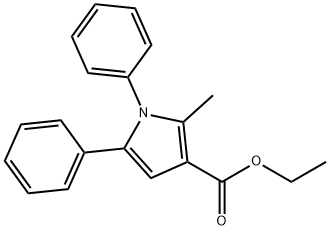

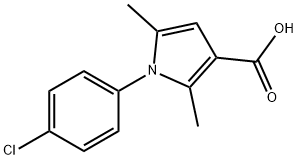
![5-[(DIMETHYLAMINO)METHYLENE]-1-(4-METHYLPHENYL)-2-PHENYL-1,5,6,7-TETRAHYDRO-4H-INDOL-4-ONE](https://img.chemicalbook.in/StructureFile/ChemBookStructure2/GIF/CB6703905.gif)
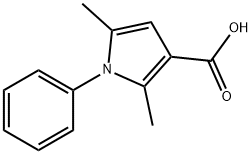


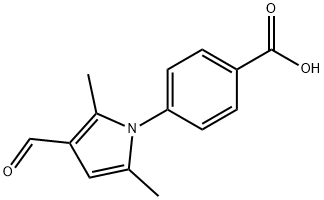
You may like
-
 83-18-1 2,5-Dimethyl-1-phenylpyrrole-3-carboxaldehyde-98% 99%View Details
83-18-1 2,5-Dimethyl-1-phenylpyrrole-3-carboxaldehyde-98% 99%View Details
83-18-1 -
 2,5-Dimethyl-1-phenylpyrrole-3-carboxaldehyde 98%View Details
2,5-Dimethyl-1-phenylpyrrole-3-carboxaldehyde 98%View Details -
 2,5-Dimethyl-1-phenylpyrrole-3-carboxaldehyde 99%View Details
2,5-Dimethyl-1-phenylpyrrole-3-carboxaldehyde 99%View Details
83-18-1 -
 1975-50-4 98%View Details
1975-50-4 98%View Details
1975-50-4 -
 2-HYDROXY BENZYL ALCOHOL 98%View Details
2-HYDROXY BENZYL ALCOHOL 98%View Details
90-01-7 -
 2-Chloro-1,3-Bis(Dimethylamino)Trimethinium Hexafluorophosphate 221615-75-4 98%View Details
2-Chloro-1,3-Bis(Dimethylamino)Trimethinium Hexafluorophosphate 221615-75-4 98%View Details
221615-75-4 -
 14714-50-2 (2-Hydroxyphenyl)acetonitrile 98+View Details
14714-50-2 (2-Hydroxyphenyl)acetonitrile 98+View Details
14714-50-2 -
 118753-70-1 98+View Details
118753-70-1 98+View Details
118753-70-1
Statement: All products displayed on this website are only used for non medical purposes such as industrial applications or scientific research, and cannot be used for clinical diagnosis or treatment of humans or animals. They are not medicinal or edible.